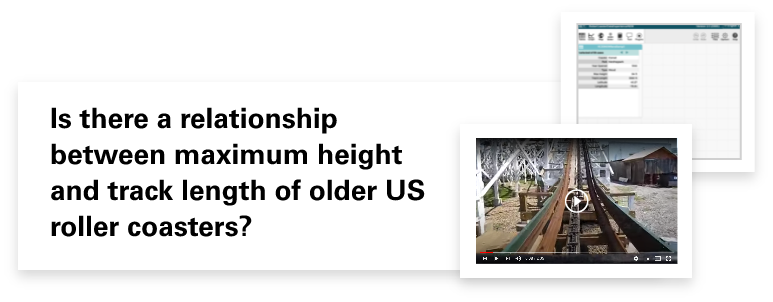About InSTEP
InSTEP is designed to support your professional learning about teaching statistics and data science and is organized to be self-paced and personalizable based on your needs and goals. There are tools to help you find and save resources specific to your learning goals, track your progress, and engage with InSTEP community members, and opportunities to earn certificates that honor the time you spend on the platform and are representative of your learning.
Framing Professional Learning
InSTEP is organized by anchoring professional learning in Dimensions of Teaching Statistics and Data Science which describe important aspects that support teaching and learning environments for statistics and data science. The diagram illustrates the interconnectedness of the seven dimensions so that advancing your learning in each can support your development in teaching of statistics and data science.

InSTEP has two primary pathways to learn about teaching statistics and data science: Data Investigations and Dimension Modules based on InSTEP's Dimensions of Teaching Statistics and Data Science.
What are the Data Investigations?
The data investigations are “hands-on” experiences that provide an opportunity to explore working with “big data” and visualization tools. Each investigation is focused on a real world context and uses multivariate data. These experiences immerse you in Data and Statistical Practices and Central Statistical Ideas and demonstrate the interconnectedness of the Dimensions of Teaching Statistics and Data Science.
What are the Dimension Modules?
Within each Dimension there are modules that support teachers' learning about critical aspects within a dimension of the framework. Each module contains resources and learning experiences that are self-paced and self-directed around a specific topic.
Data and Statistical Practices
Explore foundational processes, practices, and ways of thinking used in statistics and data science.
Central Statistical Ideas
Develop deeper understanding of key statistical and data content taught in K-12 curriculum.
Tasks
Learn to use classroom activities that support developing statistical ideas through engaging students in data and statistical practices.
Data
Develop strategies and skills for collecting and using real, motivating data to engage students in investigations.
Technology Tools
Use tools that support students with data and statistical practices and develop advanced skills to apply technology in your classroom.

Argumentation and Discourse
Examine ways to promote discourse focused on data-based arguments and how to facilitate productive classroom discussions.
Assessment of Student Thinking
Learn to evaluate students' thinking about data and statistics to inform instructional decisions.

